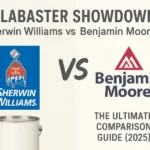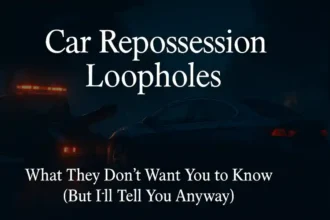Success tastes sweet, but have you ever wondered what it drives? Picture this: you’ve hustled in the industrial world (your own argent de l’industrie, as the French would say), and now you’re itching to turn that success into something tangible, flashy, and futuristic. For many go-getters, that means one thing – buying a super cool car, avec Tesla. In other words, taking your hard-earned industry money and splurging on a Tesla, the luxury electric vehicle that’s become a status symbol of modern living.
Think of it as converting boardroom victories into battery-powered bliss on the open road. It’s a stylish metaphor: argent de l’industrie, acheter une super voiture avec tesl – turning the fruits of your labor into an automotive trophy. But before you charge headfirst (pun intended) into Tesla-hood, let’s break down the FAQs swirling in your mind. From the why (“Why a Tesla of all things?”) to the how (“How can I finance a Tesla without living on ramen for the next five years?”), we’ve got you covered. Let’s dive into this electrifying journey of success and supercars.
What Does “Argent de l’industrie, acheter une super voiture avec tesl” Even Mean?
Great question! In plain English, it translates to “industry money, buy a super car with Tesla.” It’s a chic way to say “take the money you’ve earned from industry (business success) and treat yourself to an amazing Tesla.” This phrase is our mantra for turning professional success into personal luxury.
So why couch it in French? Because it adds a dash of panache. Essentially, argent de l’industrie is your hard-earned cash from your career or business. Buying a Tesla with it is the ultimate flex – a way to celebrate your success in style.
To put it metaphorically: You’ve spent years turning sweat into silver (or dollars, really) in the industrial grind. Now you’re turning that silver into a sleek, silver Tesla. It’s success, materialized. And in today’s world, a Tesla isn’t just a car; it’s a conversation piece, a tech gadget, and a green statement all rolled into one.
In short, “argent de l’industrie, acheter une super voiture avec tesl” is a catchy way of saying that making it in your industry can literally drive you into the sunset in a luxury electric car. It sets the tone for this whole discussion: turning success into something fun and futuristic on four wheels.
Why Splurge on a Tesla as Your Luxury Electric Vehicle of Choice?
You might be thinking, “Sure, I’ve got some extra cash from my success – but why Tesla? Why not a Mercedes, BMW, or that shiny Porsche?” Fair questions. Here’s the scoop on why Tesla tends to be the go-to luxury electric vehicle for the modern, savvy buyer:
Tesla = Tech Status Symbol
Owning a Tesla is like having the latest iPhone Pro Max the day it drops – it tells the world you’re ahead of the curve. It’s not just a car; it’s a rolling piece of technology. From the minimalist interior (think big touchscreens and almost no buttons) to features like Autopilot, Tesla has made sure its cars feel like the future. When you roll up to a gathering in a Tesla, it’s instant clout.
Blending Luxury with Sustainability
In the old days, success might have been symbolized by a gas-guzzling sports car. Times have changed. Today’s status symbol has to be smart and responsible. Tesla’s are fully electric, meaning zero tailpipe emissions. You’re not just indulging; you’re also giving a nod to sustainability. It’s a luxury purchase you can feel good about when you sip your latte and talk about saving the planet. Plus, Tesla’s performance can rival many supercars without a drop of gasoline – that’s guilt-free vroom-vroom.
Unparalleled Performance
Speaking of vroom, let’s talk speed. Tesla didn’t just make electric cars cool; it made them fast. Even the more affordable Model 3 can smoke many sports sedans off the line at a stoplight. And the high-end models? A Model S Plaid can do 0 to 60 mph in about 2 seconds flat, launching you back in your seat like a rollercoaster. That’s bona fide supercar territory (without the supercar maintenance headaches). It’s like having a private jet for the road – quiet, smooth, but blisteringly quick when you punch it.
Cutting-Edge Features
Teslas come loaded with features that make tech geeks drool. We’re talking over-the-air software updates (your car gets new features overnight, just like your phone does), an extensive Supercharger network for road trips, and semi-autonomous driving capabilities. The Autopilot feature can handle highway cruising and stop-and-go traffic almost like a chauffeur – just keep your hands on the wheel and stay alert. In fact, Tesla’s data shows one accident per 5.94 million miles when Autopilot is engaged, compared to one per 1.08 million miles without it. In plain terms: the car’s tech can actually make driving safer for you. That’s peace of mind and bragging rights in one.
To sum it up, you splurge on a Tesla because it checks all the boxes: luxury, performance, tech, eco-cred, and status. It’s the car that says “I care about the world, but I also love a good thrill and the finer things.” If you’re going to convert industry money into a ride, you might as well choose the one that gives you the most buzz for your buck.
Which Tesla Model is the Best for You (Model S, 3, X, or Y)?
So, you’re sold on joining the Tesla club – awesome! Now, which Tesla should you buy? Tesla’s lineup has a few stellar options, each with its own vibe. Let’s break down the best Tesla models and see what fits your style:
Tesla Model S
The Elegant Powerhouse: This is the OG luxury sedan that put Tesla on the map. Sleek and timeless, the Model S is what you get when you want a car that’s equal parts executive and exhilarating. It has the longest range of the lineup (around 400 miles on a charge in its Long Range version) and ludicrous acceleration (literally, there’s a “Ludicrous Mode”). The Model S is perfect if you want a high-end luxury electric vehicle that can smoke Ferraris in drag races while looking like a classy sedan. The price tag is high – think around $80k to start, easily into six figures for the Plaid version – truly for those turning argent de l’industrie into the top-of-the-line experience.
Tesla Model X
The Futuristic SUV: Need something roomier or love the SUV stance? The Model X has you covered with its signature Falcon Wing doors that gull-wing open, wowing the valet every time. This is the family-friendly showstopper, seating up to seven, with ample cargo space – yet it still accelerates like a sports car. It’s great for tech CEOs, soccer parents with flair, or anyone who wants to combine luxury with practicality. The Model X is pricey like the S (and likewise doesn’t qualify for some EV tax incentives due to its cost). Still, if an SUV is more your style, the X delivers a unique blend of extravagance and utility.
Tesla Model 3
The Game-Changer: Model 3 is the smaller sedan that changed the EV game. It’s more affordable (starting in the mid-$40k range new, often lower after incentives) but still offers the core Tesla experience: quick acceleration, high-tech interior, and great range (over 300 miles in the Long Range trim). It’s stylish yet practical, and it feels like a luxury car without the six-figure price. The Model 3 has been extremely popular—it’s been outselling basically all its German luxury competitors, a testament to its appeal. For many young professionals, the Model 3 is the perfect entry into the Tesla lifestyle.
Tesla Model Y
The Cool Crossover: Take the guts of the Model 3, add a dash of SUV versatility, and you have the Model Y. It’s essentially a slightly larger hatchback version of the Model 3 with more cargo space and an optional third row (mostly for kids). The Model Y has quickly become one of Tesla’s most popular models – in fact, the Model Y was the best-selling vehicle in the world in 2023, beating out even Toyota and Ford’s top sellers. Choose Model Y if you want that Goldilocks sweet spot of more space than a sedan, easier handling than a big SUV, and a mid-range price. It’s arguably the most sensible Tesla if you’re seeking a balance of price, performance, and practicality.
Now, let’s compare some key specs at a glance for the Model S vs. Model X vs. Model 3:
| Tesla Model | Starting Price (USD) | Range (miles) | 0-60 mph (quickest trim) | Seats |
| Model 3 (Sedan) | ~$45,000 (before incentives) | ~272–333 (RWD to Long Range) | 5.8 sec (Standard) / ~3.1 sec (Performance) | 5 |
| Model S (Sedan) | ~$80,000 (Long Range) | ~405 (Long Range) | 3.1 sec (Long Range) / ~1.99 sec (Plaid) | 5 |
| Model X (SUV) | ~$90,000 (Base) | ~348 (Long Range) | 3.8 sec (Base) / ~2.5 sec (Plaid) | 5–7 (w/ third row) |
(Insert comparison chart: Tesla Model S vs Model X vs Model 3 – visualizing their ranges, speeds, and price tiers)
Note: Prices and specs are approximate as of 2025 and can change with Tesla’s updates. The Model Y (not shown in the table) slots between the 3 and X: starting around $50k, ~330 miles range, 0-60 in about 4.8 sec (Long Range), seating for 5 (or 7 with the small third row).
How Can I Finance a Tesla Without Breaking the Bank?
Alright, let’s talk money — specifically, your money. Teslas are amazing, but they aren’t cheap. Don’t let those Autopilot dreams turn into financial nightmares. Financing a Tesla smartly is key to making this luxury upgrade sustainable for your wallet. Here are the ins and outs:
Explore Your Financing Options
Tesla offers direct financing and leasing through its website, or you can use a third-party lender. You can typically finance a Tesla over 36 to 72 months. Shop around for the best interest rates (which will depend on your credit score and market rates; for example, auto loan rates might hover around 5% in 2025). If you prefer flexibility, leasing a Tesla is an option too – you’ll generally have a lower monthly payment with a lease, though you won’t own the car at the end.
Down Payment & Trade-In
The more cash you put down, the lower your monthly payments. Many buyers use the proceeds from selling or trading in their old car as a down payment. Even 10-20% down can make a difference. For example, on a $50,000 Model Y, putting $5k-$10k down can significantly shrink your loan. Plus, it gives you immediate equity in the car.
Consider the Monthly Budget
Be realistic about what you can afford each month. Remember, owning a Tesla will also involve insurance (which can be higher than average, since Teslas can have pricey repair costs) and electricity costs. The good news is charging is usually cheaper than gas. According to Bankrate’s Hidden Costs of Car Ownership Study The average American spends about $2,000 per year on gasoline, and you’ll likely spend a fraction of that on electricity for your Tesla. Those fuel savings can help offset a portion of your monthly car payment or home charging installation.
Leverage Tax Credits and Incentives
Don’t forget the “free money” on the table. As of 2024-2025, the U.S. federal government offers an EV tax credit up to $7,500 for new electric car purchases, and Teslas like the Model 3, Model Y and some Model X trims do qualify (there are price and income limits: sedans must be under $55k MSRP, SUVs under $80k, among other rules). This credit can substantially cut the effective cost of your Tesla. On top of that, check your state and local incentives – from extra rebates (e.g. $2,000 in states like New Jersey or California) to HOV lane access stickers. These perks can add up. For instance, if you get the full $7,500 federal credit and a $2,500 state rebate, that $50k Model 3 effectively costs $40k – not too shabby. Keep in mind you might receive the federal credit at tax time (or as an upfront rebate at purchase, as new rules allow).
Smart Loan Shopping
Treat a Tesla purchase like any big investment. Get quotes from multiple lenders (Tesla’s financing, your bank, credit unions) to see who offers the best rate. Sometimes credit unions have surprisingly low rates for EVs. Look at the loan term: a longer term (72+ months) can reduce the monthly payment, but you’ll pay more interest overall. If you can swing a shorter term or plan to pay extra toward the principal, you’ll save money in the long run. Use an online auto loan calculator to play with the numbers until you find a comfortable scenario. And remember the golden rule: your total car expenses (loan, insurance, charging) should ideally not derail your other financial goals. Stick to a budget so your new ride remains a pleasure, not a stressor (some quick budgeting tips can help keep you on track.
Leasing Pros and Cons
Leasing a Tesla is like subscribing to a luxury experience. Pros: lower monthly payments, and you get to upgrade to a new model every few years (hello, new car smell on repeat). Cons: mileage limits (typically ~10k–15k miles/year), and you don’t build equity. If you love having the latest tech and predictably low payments – and don’t drive long distances annually – leasing might be attractive. If you drive a lot or want to eventually own outright, financing (or buying with cash) is better.
Bottom line – you can afford that Tesla if you approach it wisely. Use the same savvy that earned you that argent de l’industrie in the first place: negotiate, take advantage of incentives, and choose a financing path that fits your life. Your Tesla should feel like a reward, not a burden.
What Are the Pros and Cons of Owning a Tesla?
Even the coolest cars have their quirks. In the spirit of honesty, let’s break down the joys and the not-so-glam parts of owning a Tesla. Here’s the honest breakdown:
Pros
- Thrilling Performance: Every Tesla has instant torque, meaning when you press the pedal, you get an immediate surge of power. No waiting for an engine to rev – it’s zap and you’re gone. This makes merging onto highways or overtaking slower cars feel like a breeze. It’s addictively fun and will put a grin on your face daily.
- Low Operating Costs: Say goodbye to expensive gas and many routine maintenance costs. Charging with electricity (especially at home overnight) costs a lot less per mile than filling up with gasoline. There are also fewer moving parts to break. No oil changes, no transmission fluid, no timing belts. Many Tesla owners report spending far less on maintenance than they did with gasoline cars. Over years of ownership, these savings add up – leaving you more money for other luxuries (or, you know, paying off that car loan).
- High-Tech Everything: From the gigantic touchscreen that controls most car functions to features like Tesla Theater (yes, you can watch Netflix or YouTube on the screen while parked) – a Tesla is a gadget geek’s dream. The car gets better over time thanks to over-the-air updates. One morning you might wake up to find your car has a new interface design or even extra range, delivered via Wi-Fi while you slept. It’s like getting free upgrades to your car regularly. Also, Tesla’s smartphone app lets you do wild things like remotely preheat the car on a winter morning or summon the car out of a tight parking spot. It feels very James Bond.
- Eco-Friendly Cred: Driving electric means you’re reducing your carbon footprint. If you charge your Tesla from a clean energy source (solar panels on your home, perhaps), you’re driving on sunshine. Even if your electricity comes from the grid, in most regions EVs result in significantly lower CO2 emissions than gas vehicles. Beyond the environmental angle, there’s a nice perk: no emissions tests ever. And you get to skip gas stations entirely – reclaiming time and avoiding that gas smell on your hands.
Cons
- High Upfront Cost: We can’t ignore price. Teslas are expensive compared to many conventional cars. Even the “entry-level” Model 3 costs about as much as a well-equipped BMW 3 Series or Audi A4. The up-front cost can be a hurdle, and adding options (bigger battery, Full Self-Driving package, fancy wheels) can push the price even higher. And while EVs save money on fuel and maintenance, it generally takes several years to make up the price difference versus a cheaper gas car. So financially, it’s a long-term play or a lifestyle choice more than a short-term bargain.
- Charging Needs & Range: Owning an electric car means changing your refueling habits. For the most part, charging is easy – you plug in at home and start each day with a full battery. But if you live in an apartment without charging or frequently take long road trips, charging requires more planning. Tesla’s Supercharger network is excellent and growing, making highway travel feasible, but you’ll still spend 20-40 minutes at a charging station to juice up on trips (versus 5 minutes at a gas pump). On rare occasions, you might find a busy Supercharger station and have to wait. Also, cold weather can temporarily reduce range, so you have to account for that on winter journeys. It’s not deal-breaking, but it’s a new mindset: you plan around where and when to charge.
- Build Quality & Repairs: Tesla is a relatively young automaker, and sometimes it shows. Some owners have noted panel gaps, paint imperfections, or minor rattles that you might not expect in a car at this price. The company has improved over the years, but fit-and-finish can still be hit or miss. Additionally, if your Tesla needs service, you often have to go through Tesla’s own service centers, which in some areas can be booked out for weeks. Repairs, especially body work, can be more expensive than on a common Ford or Toyota (the flip side of those simpler designs and expensive components). And while Tesla’s mobile service (where a technician comes to you) is super convenient for minor fixes, more involved repairs might leave you waiting longer than you’d like.
- Learning Curve & Tech Quirks: If you’re used to jumping in a car and twisting a key, Tesla’s screen-centric controls might throw you at first. But most owners adapt quickly. Also, occasional tech hiccups (like the center display rebooting itself unexpectedly) can happen – it’s like owning a smartphone on wheels. Minor, but worth noting.
In the end, for most Tesla owners (myself included, speaking from personal experience and countless community anecdotes), the pros massively outweigh the cons. The driving experience and overall satisfaction are through the roof. But going in with your eyes open makes that first drive even sweeter, because you know exactly what you’re signing up for.
Think of it this way: no car is 100% perfect, but if the idea of a silent, lightning-quick, tech-loaded, eco-conscious car excites you more than the few inconveniences that come with it, you’re going to love being a Tesla owner. It’s about embracing the future – quirks and all – and enjoying the ride.
How Does Owning a Tesla Upgrade Your Lifestyle?
Owning a Tesla isn’t just about getting from A to B – it’s a lifestyle upgrade on multiple levels. First off, convenience is king. You wake up each day to a “full tank” after charging at home, so no more gas station trips or routine oil changes. On your commute, you can let Autopilot shoulder some of the stress; imagine cruising in traffic while your Tesla handles the stop-and-go, giving you a chance to relax and sip your coffee. Your daily drive transforms from a chore into a bit of quality time.
There’s also a sense of pride and excitement that comes with the Tesla life. It’s knowing that your vehicle is cutting-edge and eco-friendly – you’re part of a forward-thinking club. Friends and strangers alike might strike up conversations (“Is it true it can drive itself?”), and you become an ambassador of modern tech. And let’s not forget the simple joy factor: every time you hit the accelerator or use a voice command to preheat your car on a cold morning, you’re reminded that you treated yourself to something special.
In short, owning a Tesla subtly upgrades your day-to-day routine. It blends luxury with innovation, turning mundane drives into something you actually look forward to. It’s a daily reminder of how far you’ve come – and how you’re cruising ahead into the future.
Conclusion
Turning argent de l’industrie into a Tesla is more than a purchase – it’s a statement. It says, “I’ve worked hard, I’ve succeeded, and I choose to enjoy the fruits of my labor in a forward-thinking way.” It’s the crossroads of ambition and innovation, where your past grind meets your present joyride.
We’ve navigated the road from dreaming about that luxury electric vehicle to making it a reality – covering the why, the which, and the how of buying a Tesla with your industry-earned money. The key takeaways? Tesla offers an experience that’s thrilling and future-forward, but it comes with responsibilities (financial planning and adapting to new tech). Plan wisely, take advantage of incentives, and pick the model that fits your life, and you’ll find that owning a Tesla can be one of the most rewarding ways to mark your success.
Ready to take the leap into Tesla ownership and that upgraded lifestyle? Go for it – but do it smartly. If you found this helpful or inspiring, share it with a friend who’s been eyeing a shiny new ride. Drop a comment with your thoughts or any personal Tesla tales – we’d love to hear your stories of mixing success with supercars. And don’t forget to explore more of our guides on modern living and smart upgrades (why stop at the car when you can upgrade your home too, right?).
Here’s to turning success into tangible rewards and enjoying every mile of the journey. Buckle up, future Tesla owner – the road ahead is bright, electric, and exciting!















